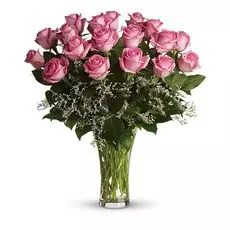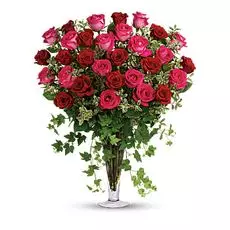4 Awesome Flowers to Add to Your Valentine’s Day Bouquet
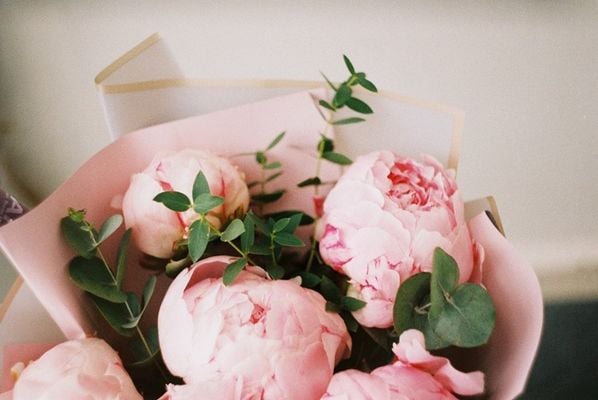
Why settle for the familiar red rose when you can demonstrate your love more expressively with a unique V-Day mixed bouquet?
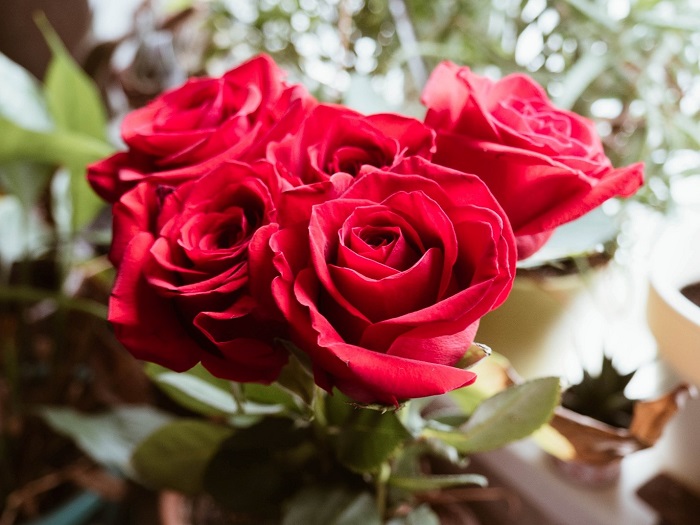
Eighty-four percent of consumers opt for roses for Valentine’s Day. You have the option to stand out in your love expression by choosing a floral gift that’s a bit more different than the rest. Among your options is a brilliant bouquet of pink tulips signifying true love. The showstopper midnight calla lily that symbolizes faithfulness, beauty, and magnificence is also an impressive option.
Should you still prefer to go with the good ol’ red rose, tweak the ensemble up a bit and add another flower type. By doing a combination or a mixed floral ensemble, you get to boost the wow factor and heartwarming impact of your Heart’s Day present.
Here are 4 romantic and meaningful flowers that can give your Valentine’s Day bouquet an extra dose of sweetness.
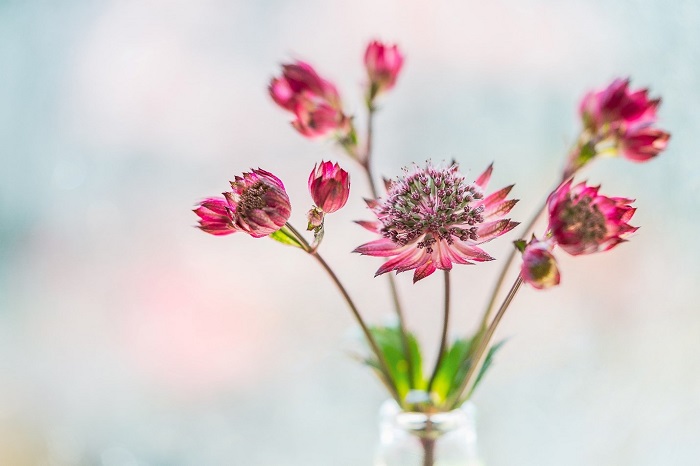
Astrantia
Add visual interest to your bouquet with the textured beauty of the star-shaped buds of Astrantia. This blossom pairs perfectly well with any floral arrangement palette. A long-lasting cut flower, Astrantia or Masterwort showcases small flower heads in a range of colors including red, reddish-purple, white, cream, and pink. White Astrantia symbolizes innocence and purity while pink ones represent grace and femininity. Red Astrantias stand for strength, courage, and passion. This flower’s name originates from the Latin word “aster” which means “star.” This dainty blossom is the perfect addition to a Valentine’s Day bouquet if the love of your life is also the star in your sky.
Color Symbolism
- White Astrantia: Represents purity and new beginnings, ideal for relationships rooted in sincerity and spiritual connection. Historically linked to divine energy, it’s a subtle nod to timeless devotion.
- Pink Astrantia: Embodies grace and tender affection, echoing Victorian-era sentiments of admiration. Its soft hues evoke femininity, making it a heartfelt choice for celebrating a partner’s nurturing spirit.
- Red Astrantia: Symbolizes fiery passion and courage, inspired by its resilience in harsh conditions. In folklore, it was believed to ward off negativity, guarding love’s flame like a protective charm.

Butterfly Ranunculus
Another dainty bloom that will enhance the dreamy look of any Valentine’s rose bouquet. This flower features multiple branches per stem and iridescent petals. It is a special type of ranunculus with a soft sparkle that can surely make any bouquet look ultra-gorgeous. It comes in various shades including white, yellow, peach, purple, red, pink, and orange. As a cut flower, this bloom will last for at least two weeks in a vase.
Color Symbolism
- White Butterfly Ranunculus: Represents purity, spiritual serenity, and new beginnings. A bridal favorite, it echoes Victorian floriography’s message of “You are pure and radiant,” ideal for vows rooted in sincerity and renewal.
- Pink Butterfly Ranunculus: Embodies tender admiration and youthful romance, with soft hues evoking grace and femininity. Inspired by Persian tales of beauty intertwined with fleeting desire, it whispers of delicate, heartfelt affection.
- Red-Edged Picotee Butterfly Ranunculus: Merges purity (white) with fiery passion (red), symbolizing a love that balances tenderness and intensity. The picotee’s dual tones mirror Victorian-era coded messages, where layered colors conveyed unspoken devotion.
- Purple Butterfly Ranunculus: Signifies regal creativity and mystery, tied to Persian nobility’s opulence. Its deep hues evoke artistic passion, perfect for celebrating a love that thrives in imagination and depth.
- Yellow Butterfly Ranunculus: Radiates joy, friendship, and optimism. Linked to Native American legends of resilience and ingenuity, it embodies playful, sunlit love—ideal for relationships built on shared adventures.
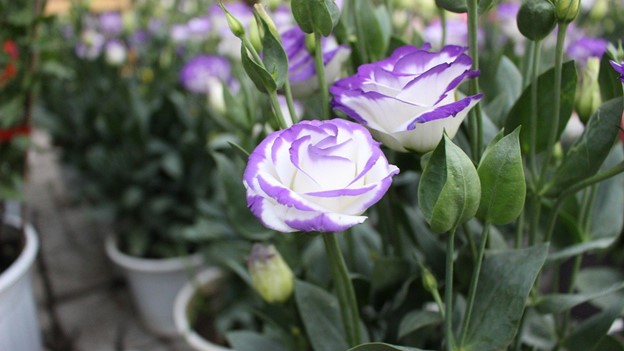
Lisianthus
Symbolizing gratefulness, this bloom tells your loved one that you’re thankful for her presence in your life. The flower o appreciation, respect, acceptance, love, and acknowledgment, a lisianthus blossom would make a meaningful addition to any bouquet. This darling of a flower features a charisma that’s hard to look away from. Its delicate petals will complement the velvety petals of a rose. You can combine lisianthus with contemporary bouquets, vintage-style floral arrangements, and handpicked-style floral bunches.
Color Symbolism
White Lisianthus: Symbolizes purity, spiritual connection, and eternal devotion. Its pristine petals evoke bridal elegance, making it a staple in wedding bouquets to represent vows of unwavering loyalty. In Victorian floriography, white lisianthus signified “a bond blessed by heaven”.
Pink Lisianthus: Embodies grace, gratitude, and tender admiration. Its soft, layered petals mirror the blush of a new romance, while in Japanese flower language (Hanakotoba), it conveys heartfelt appreciation for a partner’s gentle presence.
Purple Lisianthus: Represents royalty, enchantment, and enduring charm. Linked to its Greek-derived name Eustoma (“beautiful mouth”), it whispers of poetic declarations of love. In folklore, purple lisianthus was gifted to symbolize a love as rare and captivating as its velvety hues.
Green Lisianthus (e.g., ‘Mariachi Verde’): Signifies renewal, resilience, and growth. Its subtle jade tones nod to relationships that thrive through challenges, while modern florists use it to celebrate eco-conscious love or partnerships rooted in harmony with nature.
Bi-Color Lisianthus (e.g., white with violet edges): Merges purity (white) with mystique (purple), symbolizing a love that balances serenity and passion. The dual tones echo Victorian-era “secret messages,” where layered colors expressed complex, unspoken emotions.
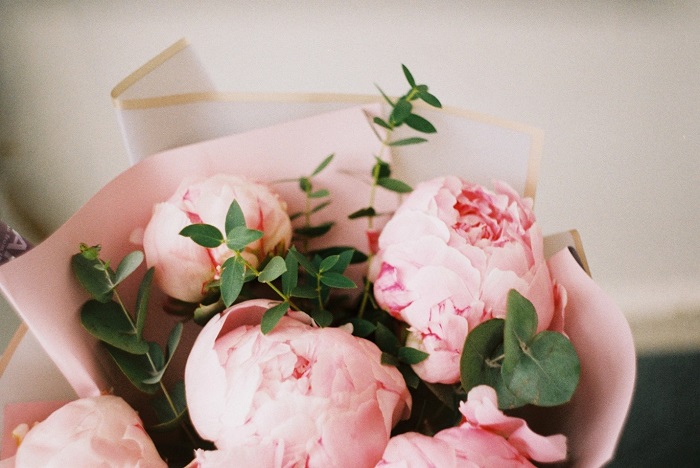
Peonies
A beautiful and fragrant flower, the exquisite peony speaks a special language. It’s a flower of good fortune and happy marriage. Its luxurious full, open, and round blooms that are packed with petals convey prosperity and overflowing love. As a perennial, this bloom comes back every year and is known to thrive for generations with little maintenance. It can last for at least a hundred years which is a good representation of your lifetime commitment.
Color Symbolism
White Peonies: Symbolize purity, bashful love, and new beginnings. Often used in bridal bouquets, their lush petals evoke innocence and youthful devotion. In Victorian floriography, gifting white peonies signaled a heartfelt apology or a promise to cherish someone’s untainted spirit.
Pink Peonies: Embodies romance, prosperity, and a happy marriage. Revered as the “king of flowers” in Chinese culture, pink peonies represent wealth in love and enduring affection. Their blush tones are tied to the myth of a nymph who transformed into a peony to escape admiration, symbolizing beauty that inspires eternal longing.
Red Peonies: Signify passion, honor, and unwavering commitment. Linked to Chinese traditions of good fortune, red peonies are gifted to celebrate fiery, enduring partnerships. Folklore claims their bold hue comes from the blood of star-crossed lovers, making them a talisman for courage in love.
Coral Peonies: Represents playful desire, uniqueness, and modern romance. A hybrid of pink and orange tones, coral peonies blend passion with joy, ideal for relationships that thrive on spontaneity. Their rarity in nature mirrors the celebration of a love that defies convention.
Bi-Color Peonies (e.g., white with crimson flares): Merges purity (white) with fervent passion (red), symbolizing a harmonious balance of tenderness and ardor. In Japanese Hanakotoba, bi-color blooms convey layered emotions, such as “my love grows deeper with time”.
All these four unusual V-Day flower choices deserve a place in a Valentine’s Day bouquet. They’re beautiful, romantic and expressive in their own ways. You see, Valentine’s Day doesn’t have to be only about roses. Mix up with different blooms and give your significant other a distinctive bouquet that will surely stun and make a mark.
This article was first published on 2.8.22. We added a bunch of visuals and more detail surrounding color symbolism and published again on 2.6.25.
